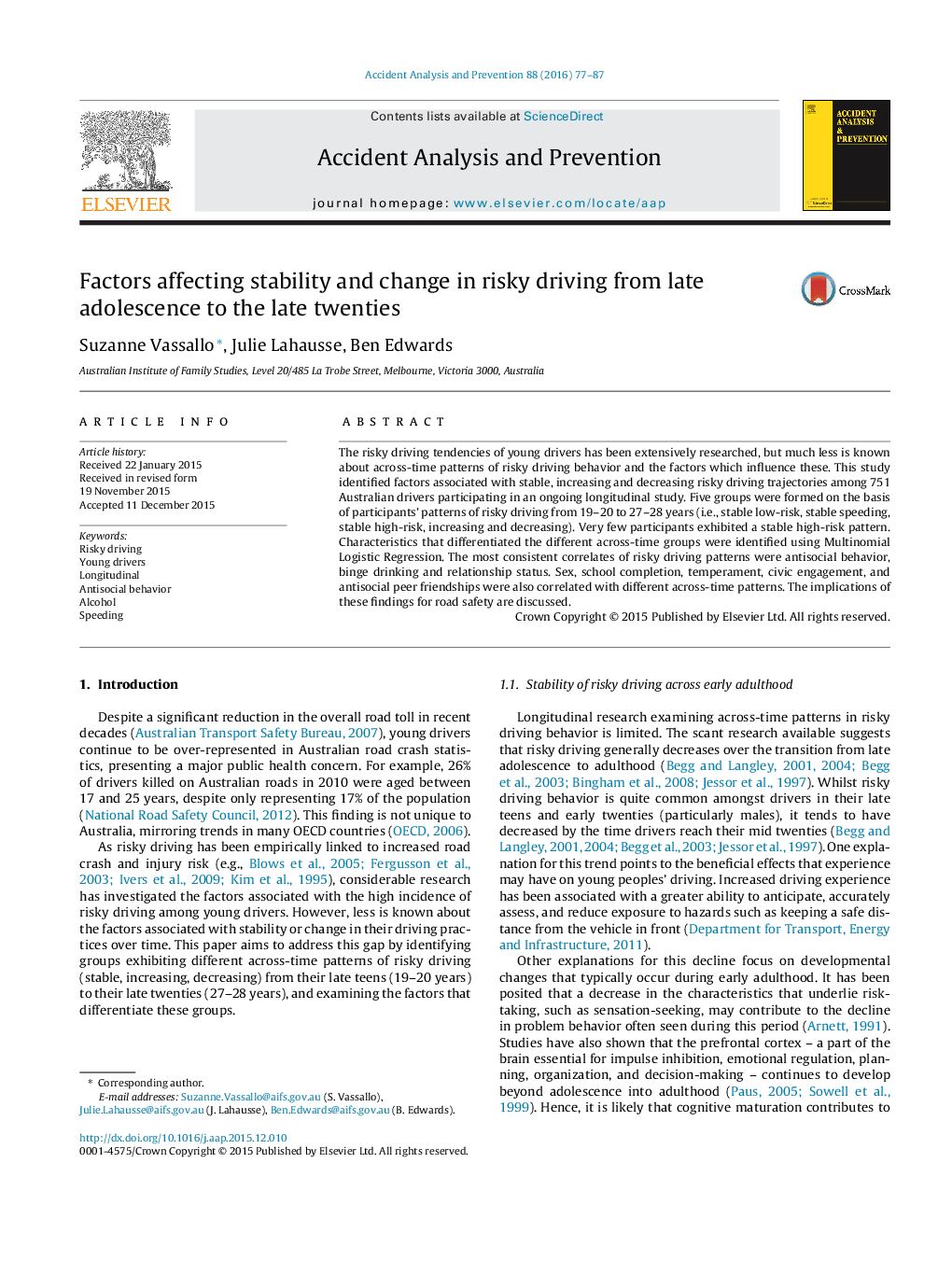| Article ID | Journal | Published Year | Pages | File Type |
|---|---|---|---|---|
| 6965360 | Accident Analysis & Prevention | 2016 | 11 Pages |
Abstract
The risky driving tendencies of young drivers has been extensively researched, but much less is known about across-time patterns of risky driving behavior and the factors which influence these. This study identified factors associated with stable, increasing and decreasing risky driving trajectories among 751 Australian drivers participating in an ongoing longitudinal study. Five groups were formed on the basis of participants' patterns of risky driving from 19-20 to 27-28 years (i.e., stable low-risk, stable speeding, stable high-risk, increasing and decreasing). Very few participants exhibited a stable high-risk pattern. Characteristics that differentiated the different across-time groups were identified using Multinomial Logistic Regression. The most consistent correlates of risky driving patterns were antisocial behavior, binge drinking and relationship status. Sex, school completion, temperament, civic engagement, and antisocial peer friendships were also correlated with different across-time patterns. The implications of these findings for road safety are discussed.
Related Topics
Physical Sciences and Engineering
Chemical Engineering
Chemical Health and Safety
Authors
Suzanne Vassallo, Julie Lahausse, Ben Edwards,
